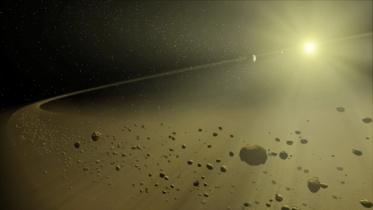| Mon | Tue | Wed | Thu | Fri | Sat | Sun |
|---|---|---|---|---|---|---|
| 1 | 2 | 3 | ||||
| 4 | 5 | 6 | 7 | 8 | 9 | 10 |
| 11 | 12 | 13 | 14 | 15 | 16 | 17 |
| 18 | 19 | 20 | 21 | 22 | 23 | 24 |
| 25 | 26 | 27 | 28 | 29 | 30 | 31 |
Lectures / 26/01/2009 7:30 pm
Body?
We are stardust. Cosmic dust as the basis of human existence
In everyday life, dust is exclusively connotated with negative associations. Dust is frowned on. This changes radically the moment stardust enters the stage. Particles of stardust have an decidedly more positive function in the materials cycle of the universe. If it was not for them, there would be no stable planets and no life. Thomas Posch’s presentation introduces us to the fascinating world of stardust: he will be talking about the wealth of different colours and shapes of the mineral grains and about astronomical phenomena related to the presence of dust – such as the dark nebulae that galaxies owe their structured appearance to.
continuative Links:
- apod.nasa.gov/apod
- de.wikipedia.org/wiki/Meteorit
- de.wikipedia.org/wiki/Mikrometeorit
- de.wikipedia.org/wiki/Sternenstaub_(Astronomie)
Bibliography:
- Rolf W. Bühler, Meteorite, Birkhäuser Verlag, 1988.
- Sun Kwok, Cosmic Butterflies, The Colorful Mysteries of Planetary Nebulae, Cambridge University Press 2001.
- Monatszeitschrift „Sterne und Weltraum“, insbes. Ausgabe 2/2005 mit größerem Aufsatz „Staub- Baustoff für Planeten“.








